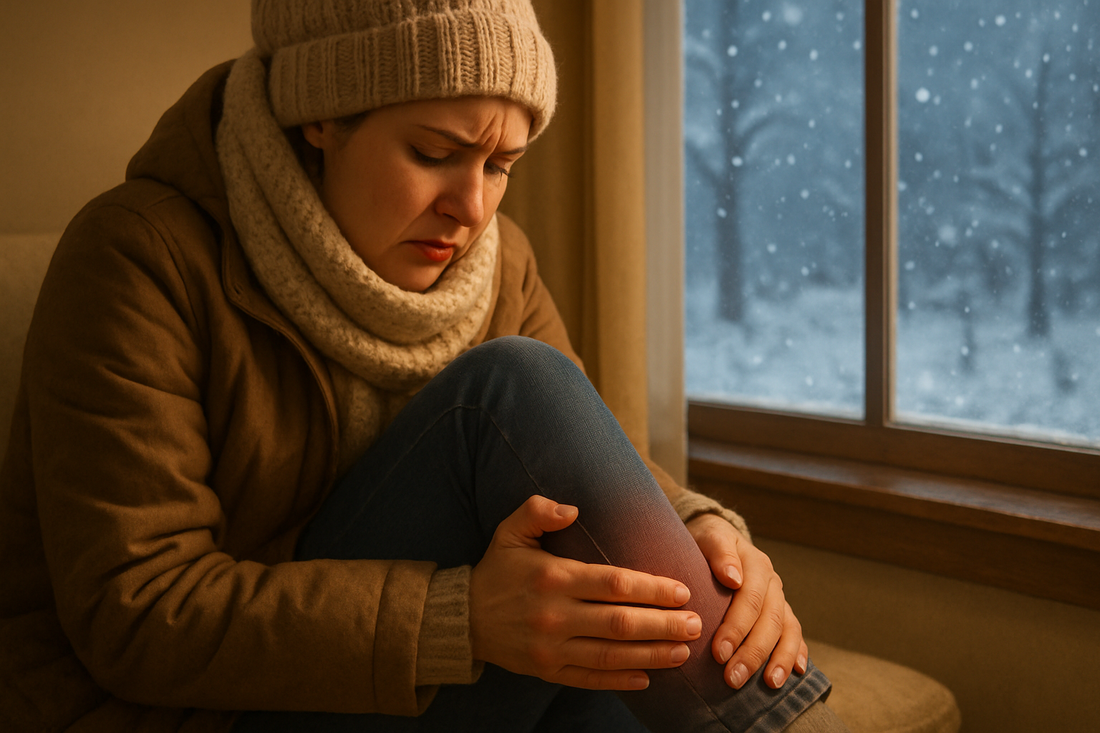
Post‑Workout Soreness vs Injury in Cold Weather: Smart Recovery Tips
Share
Post-Workout Soreness vs Injury in Cold Weather: Smart Recovery Tips
As temps drop, recovery changes. Here’s how to tell normal post-workout soreness from a brewing injury—and the routines that help you stay mobile, resilient, and consistent, including how to use ReJüv Gel as part of a winter-smart plan.
Why Cold Weather Changes Your Recovery
Circulation & Tissue Stiffness
Cold causes vasoconstriction, so less warm blood reaches muscles and connective tissue. Micro-repair can slow, and tissues feel tighter. Pair light heat (warm shower, heated pad) with gentle movement to regain glide before you load.
Short Warm-Ups = Bigger Microtrauma
Rushed warm-ups in cool air invite tweaks. In winter, extend your dynamic prep by 5–10 minutes and begin with low-impact motion to gradually raise tissue temperature and joint lubrication.
Soreness or Injury? Key Differences
Timing, Location, Quality
- DOMS timing: peaks 24–72 hours post-session; dull, diffuse, often symmetrical.
- Injury timing: pain during the session or immediately after; sharper, localized to a tendon, joint line, or specific spot.
- Movement test: soreness allows motion (just stiff); injury limits range or produces sharp, catching pain.
Red Flags
- Visible swelling, heat, or spreading bruising
- Sharp, progressive pain or joint “giving way”
- Night pain that interrupts sleep
Cold-Weather Recovery That Works
Warm-Up & Active Recovery
- 5–10 extra minutes of dynamic prep (leg swings, marching, arm circles, hip openers).
- On off-days: walking, cycling, swimming, yoga, or mobility flows to keep blood moving.
Topicals, Heat & Compression
Apply ReJüv Gel to stiff zones (knees, calves, hips, lower back) on clean, dry skin. Massage 20–30 seconds, let it absorb, then layer light compression to trap warmth. Reapply 2–4× daily as needed.
Sleep, Hydration & Nutrition
- Dry indoor air dehydrates—sip consistently through the day.
- Evening protein + colorful plants (omega-3s, greens, berries) support repair.
- Prioritize high-quality sleep; cold stress increases recovery demand.
Using ReJüv Gel Smartly in the Cold
Simple Routine
- Morning: Apply to frequent hotspots before first movement block.
- Pre-workout: Reapply 10–15 minutes before training after a short warm-up.
- Evening: Spot-treat before mobility or bedtime to reduce overnight stiffness.
Pick Your Size
- ReJüv Gel 3oz — gym bag, office drawer, travel
- ReJüv Gel 8oz — daily home use
- ReJüv Gel 16oz — best value for families, teams, and clinics
Browse everything: All Products
When to Rest & Get Help
If sharp pain persists, mobility shrinks, or swelling increases over 24–48 hours, pause impact work and contact a licensed clinician.
FAQs
Does soreness last longer in the cold? Often yes—slower circulation extends the DOMS window, so plan extra recovery.
Can I use ReJüv before outdoor workouts? Yes. Apply 10–15 minutes pre-session after a short warm-up to reduce early stiffness.
Heat or ice? Heat before movement to improve pliability; ice sparingly for acute swelling.
How many times per day? Typically 2–4× as needed on clean, dry skin.
Will ReJüv stain or smell? No—odorless, colorless, non-greasy.
